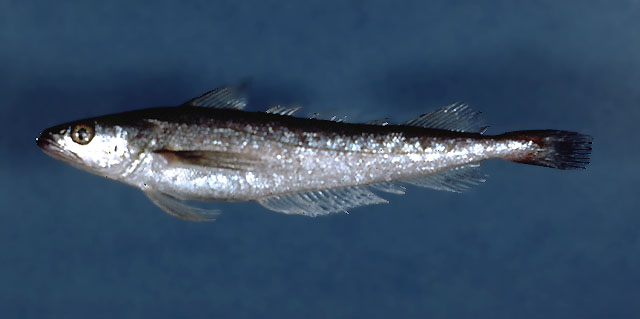| Merlucciidae (Merluccid hakes) |
| 76 cm TL (male/unsexed); max.weight: 2,300.0 g; max. reported age: 12 years |
|
demersal; marine; depth range 55 - 914 m, oceanodromous |
| Northwest Atlantic: coast of Canada and USA from Bell Isle Channel to the Bahamas; most common from southern Newfoundland to South Carolina. |
|
Dorsal spines (total): 1-1; Dorsal soft rays (total): 47-54; Anal spines: 0-0; Anal soft rays: 37-41. Head large, about 30% of SL . Pectoral fins long, reaching origin of anal fin. Overall color is silvery, somewhat brownish on back, whitish on belly. |
| Abundant on sandy grounds and strays into shallower waters. A voracious predator with cannibalistic habits. Individuals over 40 cm TL prey on fishes such as gadoids and herring, while smaller ones feed on crustaceans, i.e. euphausiids and pandalids; food also includes gaspereau, myctophids, smelt, silversides, mackerel, sand lance, butterfish, snakeblennies, longhorn sculpins and squids (Ref. 5951). The smallest specimen feeds mostly on crustaceans (Ref. 58452). Exhibits seasonal onshore-offshore migration (Ref. 9988). Spawning takes place from June-July in the mid-Atlantic region; July-August in the Gulf of Maine and to the north of Georges Bank, and August-September on the Scotian Shelf (Ref. 58452). Marketed fresh, smoked and frozen; fresh fish are exported to European markets; eaten fried, broiled, microwaved and baked (Ref. 9988). |
|
Near Threatened (NT); Date assessed: 06 January 2015 Ref. (130435)
|
| harmless |
Source and more info: www.fishbase.org. For personal, classroom, and other internal use only. Not for publication.
